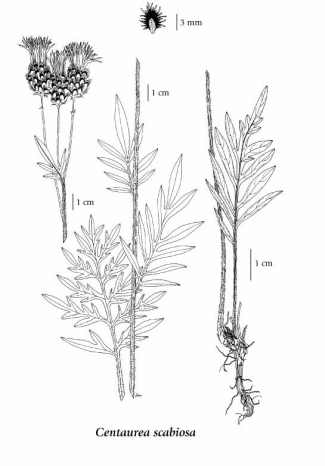E-Flora BC: Electronic Atlas of the Flora of British Columbia
Centaurea scabiosa L.
greater centaurea (greater knapweed) Asteraceae (Aster family) Introduction to Vascular Plants
|
||||||||||||||||
